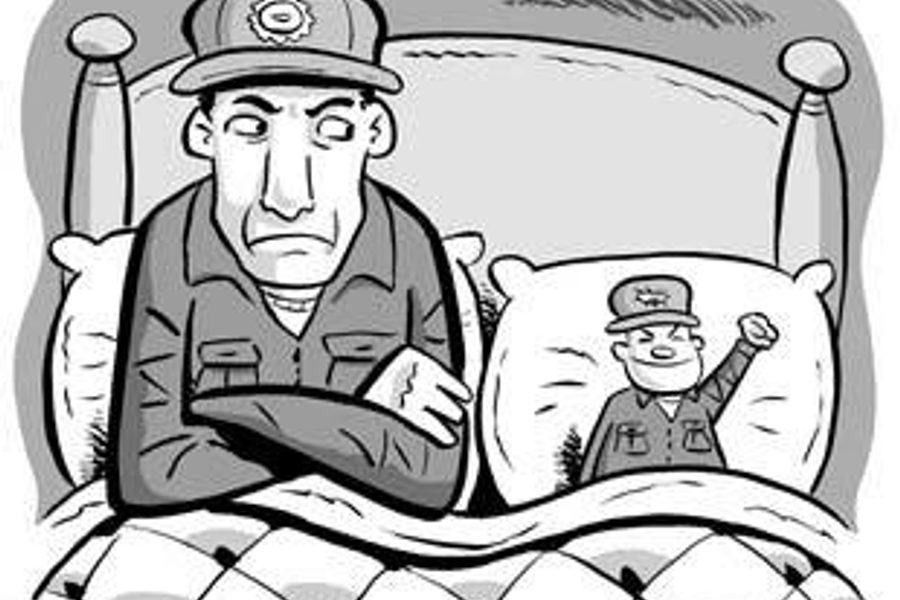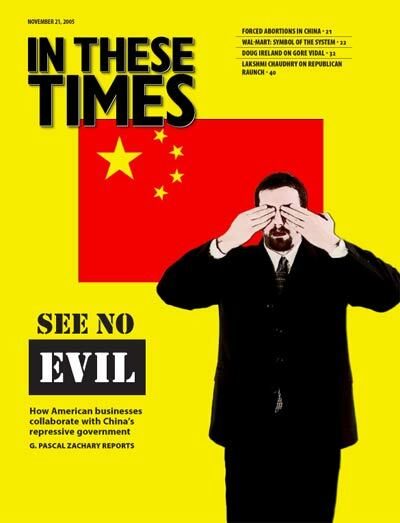The Lay of Labors New Land
As the Change to Win Federation takes shape, questions about how it will co-exist with the AFL-CIO remain
David Moberg

After a year of turbulent debate and division at the top, America’s unions are adjusting to a new organizational landscape while still grappling with the same old challenge: how to grow and gain power. With the founding of the Change to Win Federation (CTW) in late September, the summer split of the AFL-CIO took firmer shape, but its ultimate impact is still up in the air.
Despite the schism, there is pressure on leaders from both sides to cooperate. CTW is a new, not a rival, federation, insists Laborers’ union president Terry O’Sullivan, who doesn’t want “differences of opinion [to] lead to the dismantling of the labor movement.” But there is also a new edge to the competition to organize between the non-rivals.
“This is more change than the labor movement has seen in 30 years,” UNITE HERE (hotel and textile workers) president Bruce Raynor said on the eve of the September 27 CTW convention in St. Louis, an enthusiastic one-day pep rally celebrating organizing campaigns. But Raynor said he also anticipated big changes in the AFL-CIO. Indeed, in October the AFL-CIO launched the first of its industry coordinating committees to develop a common strategy for 10 unions in the arts, entertainment, media and telecommunications industries.
The changes in Change to Win
It’s clear that Change to Win – with about 5.4 million members in seven unions, compared to 9 million among the 52 unions still at the AFL-CIO – will be a different kind of labor federation. It will devote three-fourths of its relatively small, $16-million budget to organizing, employing minimal staff and no full-time officers. The AFL-CIO currently has income of roughly $100 million, and has budgeted $22.5 million for organizing. But five CTW unions have left the AFL-CIO and the Laborers are soon to follow, which leaves only the Farmworkers in both federations. This shift will force major adjustments to the AFL-CIO.
When AFL-CIO president John Sweeney took office a decade ago, he tried to strengthen the labor movement in part by beefing up the AFL-CIO itself and greatly expanding the executive council. By contrast, only the seven union leaders (with three additional diversity representatives) will directly govern Change to Win. The group’s new president, Anna Burger of SEIU, and its secretary-treasurer, Edgar Romney of UNITE HERE, are, respectively, the first woman and first African-American to hold such high labor offices.
CTW unions claim that collectively they will spend $750 million a year on organizing, which by conventional standards should yield about 750,000 new members a year (compared to 500,000 or fewer for all unions in recent years). Yet there are reasons to be skeptical that they will actually spend that much.
Indeed, current CTW union commitments to – and success in – organizing vary greatly. SEIU and UNITE HERE spend more than half their international budgets for organizing, but the Teamsters and UFCW (food and commercial workers) have much more modest programs. With the exception of SEIU – which has made its biggest gains in the public sector – all of the other CTW unions have been unable to organize more new members than they lose to offshoring and other employment cutbacks every year, an indication of the challenge CTW faces.
Don’t mourn, organize
But the new CTW Strategic Organizing Center, led by savvy organizer and SEIU Vice-President Tom Woodruff, intends to launch large-scale organizing campaigns that target major employers or industries, involve one or more of the affiliated unions, and even take on a global scope. For example, a new SEIU campaign with Union Network International, a global service union federation, aims to organize security guards employed by two dominant transnational companies, Securitas and Securicor, which owns Wackenhut. CTW plans to launch new campaigns at major employers as well as support ongoing efforts that target big employers, regions or industries in a single campaign, such as drives to organize janitors, school bus drivers, security guards, hotel employees, industrial laundry workers and health caregivers.
Woodruff says CTW’s main target will be the 44 million workers who are currently unorganized in “jobs that can’t be offshored or digitized,” in industries such as food preparation, health care, transportation and general services. Improving such low-wage jobs, Woodruff argues, will “create a new middle class in this country.”
Unlike the AFL-CIO, the Strategic Organizing Center will have the authority, funds and experienced organizers to launch large-scale, new campaigns with individual unions that support each other. “The organizing campaign of one union is the organizing campaign of every union,” Woodruff said. And Raynor promised that “we will stand up at crucial moments with massive support of each union,” such as the support Chicago janitors and Teamsters recently pledged to give Houston janitors seeking a union.
Despite earlier CTW proposals, there is not likely to be a major conventional effort to organize Wal-Mart workers. Instead, CTW officials will step up their criticism of Wal-Mart’s practices and support a new loose association of Wal-Mart workers in the United States, while backing existing union organization in Canada, Korea and other countries.
Organizers from both CTW and the AFL-CIO unions agree that the secret to union growth is, in Woodruff’s words, “to get the employer out of the way.” For example, the Communications Workers (CWA), with longtime organizer Larry Cohen as its new president, is now signing up what may be 20,000 new members at Cingular Wireless – a result of having earlier negotiated an agreement by Cingular to recognize the union when a majority of workers sign up.
The AFL-CIO continues to promote legislation that would facilitate organizing and has called for major actions on December 10, International Human Rights Day, while the CTW unions seem likely to rely more on winning employer neutrality either through direct pressure or forging mutually beneficial relationships. At the CTW convention, SEIU president Andy Stern argued that labor has often failed because “we’ve had a very class-struggle strategy. In the new economy we need partnerships with employers where ‘Team America’ has a plan for building the American economy.”
Cooperation or competition?
But the immediate concern for many local union leaders was whether there could be a “Team Labor” after the split. After months of conflict, SEIU and AFSCME ultimately signed an agreement to cooperate on organizing home care workers, but Teamsters in Chicago have initiated raids on two different AFL-CIO affiliated unions. On the Gulf Coast, both federations launched somewhat different but non-competitive hurricane relief programs.
Most important, however, has been resolving the question of how locals from unions that leave the AFL-CIO can participate in the politically important central labor councils and state labor federations. Sweeney first ruled that they couldn’t participate, then offered them the option of special “solidarity charters,” but the disaffiliated unions rejected the terms. Local union leaders feared that failure to reach a resolution would likely hurt all unions and progressive politics.
“The two parties – leaders of the AFL-CIO and Change to Win – must find a way for unionists to work together at the state and local level,” says Cleveland Federation of Labor leader John Ryan, who blames the split for one primary loss already. “As every week goes by, the urgency increases, and the importance of having people work together becomes so clear in every way.”
By mid-October, there appeared to be agreement that CTW unions with solidarity charters would cooperate on programs of the state and local groups, including mutual no-raiding agreements, and could run members for office. The last sticking point concerned how much the new solidarity charter locals would pay to support the costs of both programs and their administrative support.
The debate about whether Change to Win needed to leave the AFL-CIO to pursue its laudable organizing objectives is over. Now the question is whether the two federations can cooperatively pursue separate strategies toward a common goal. Stern says that CTW unions will never return to the AFL-CIO, but leaves open the possibility for a new unified labor organization. In the meantime, it appears that at least unity on the local level may be preserved, and that will make leaders like John Ryan a little bit happier.
David Moberg, a former senior editor of In These Times, was on staff with the magazine from when it began publishing in 1976 until his passing in July 2022. Before joining In These Times, he completed his work for a Ph.D. in anthropology at the University of Chicago and worked for Newsweek. He received fellowships from the John D. and Catherine T. MacArthur Foundation and the Nation Institute for research on the new global economy.









